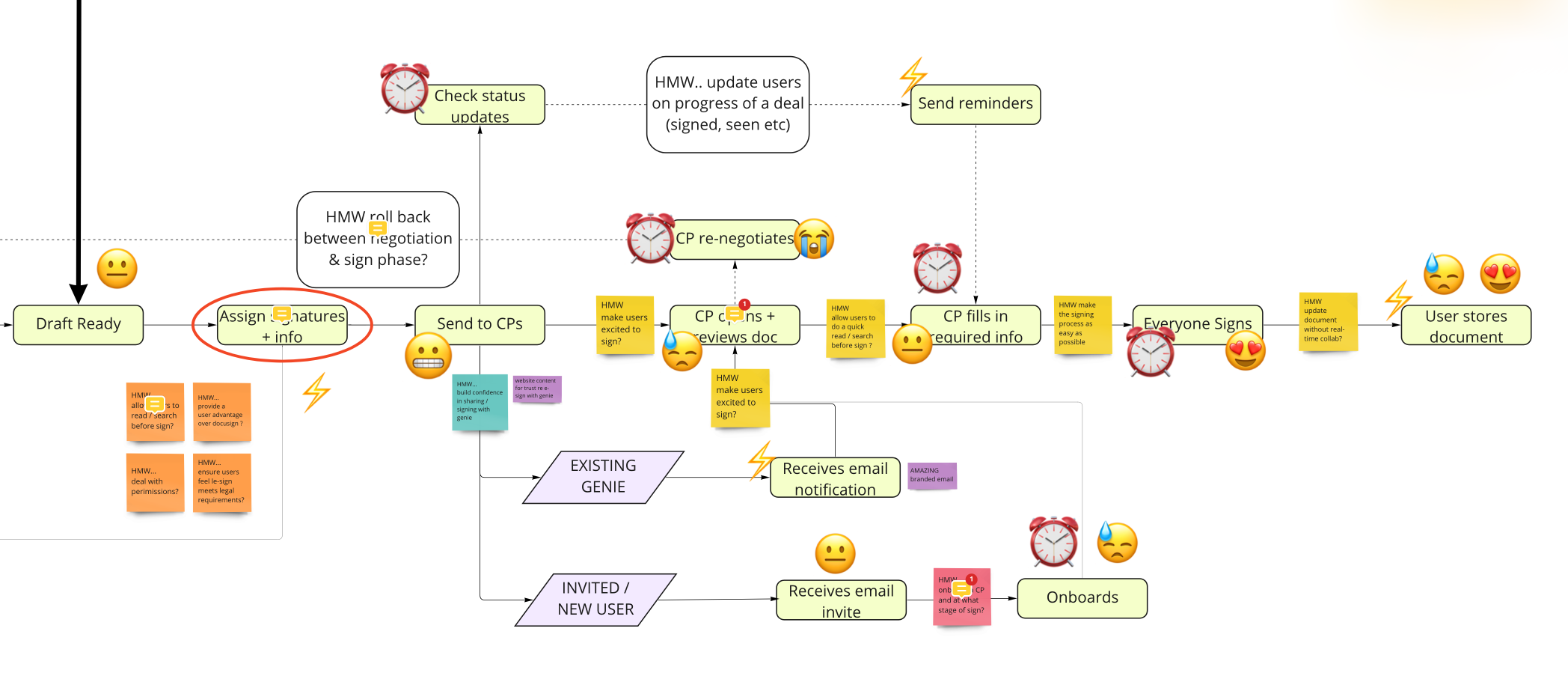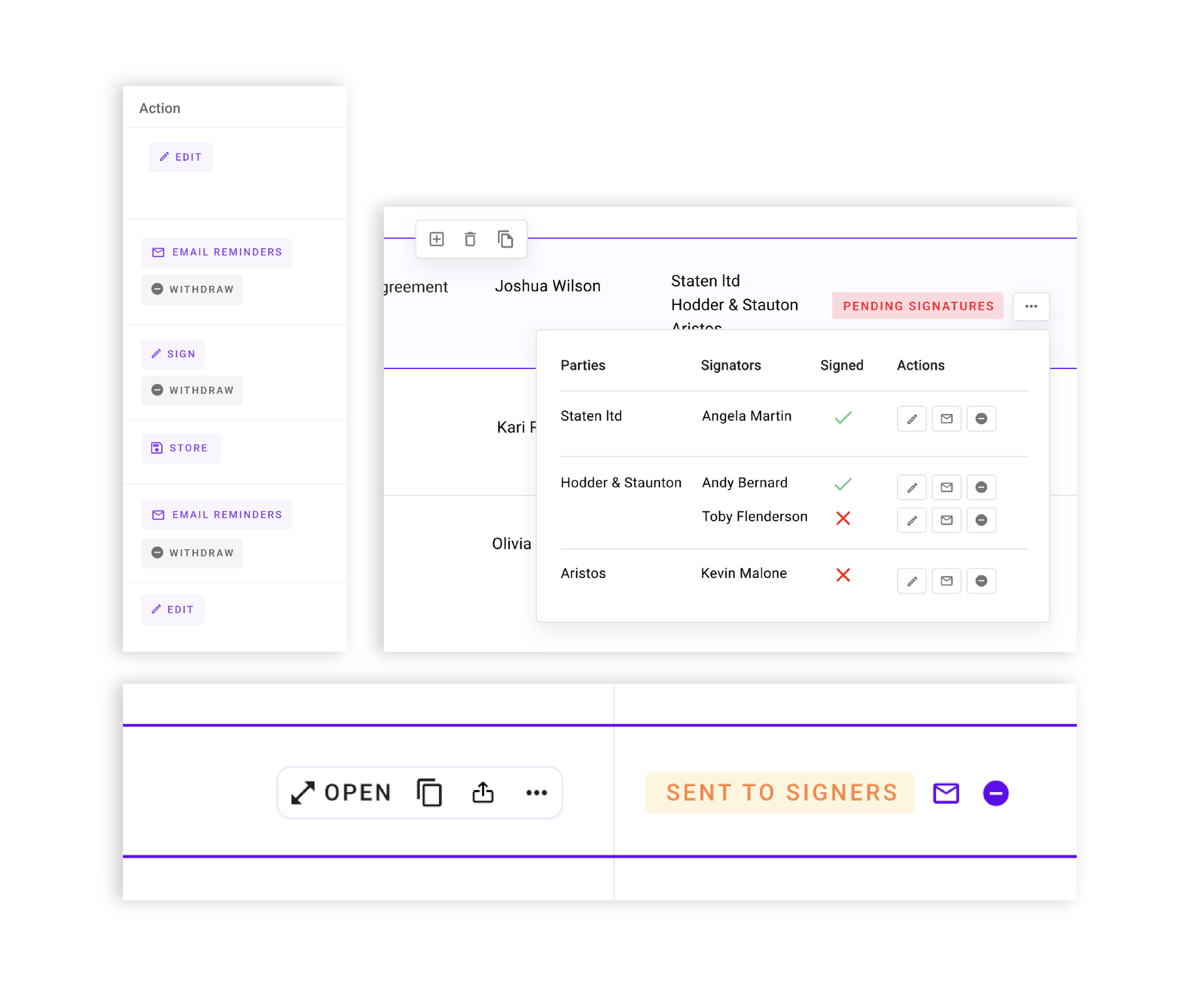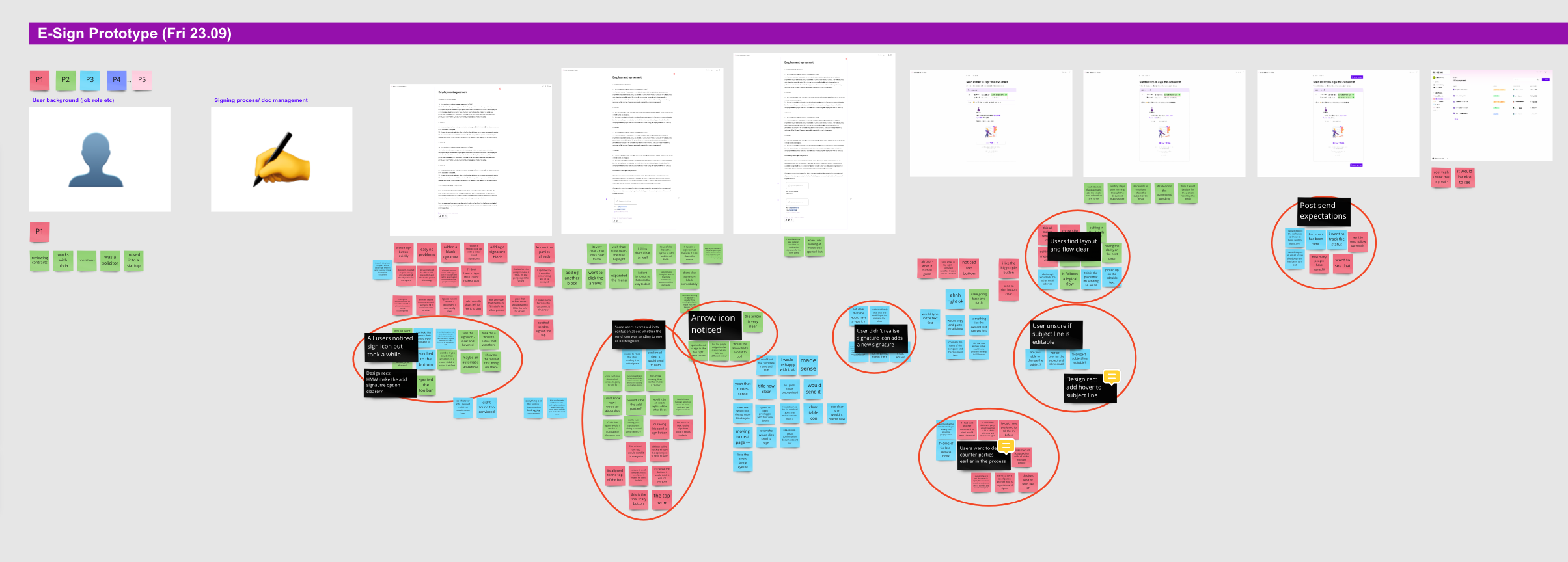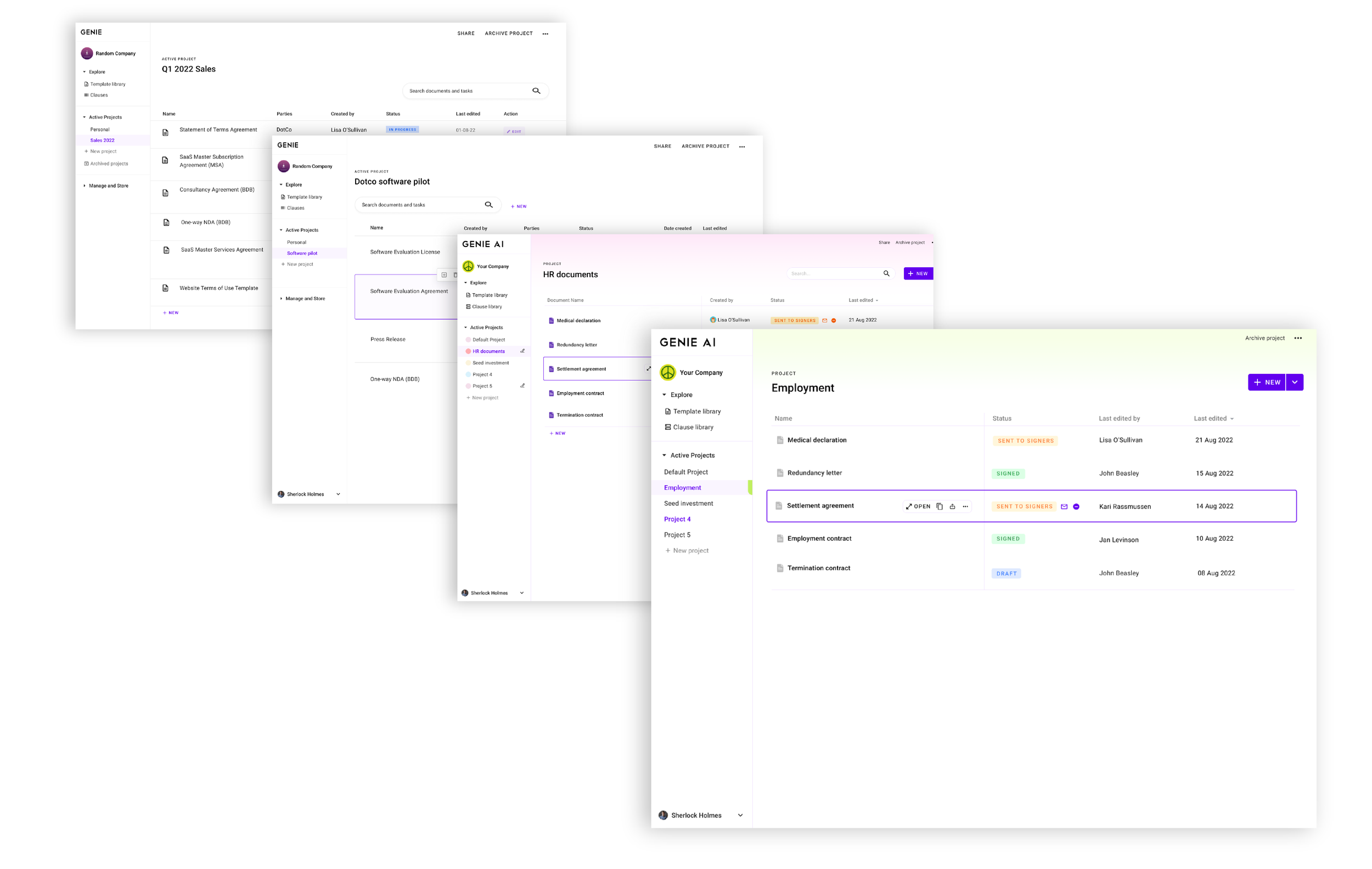Genie ai
Genie AI is a B2B SaaS product which provides templates for legal documents and legal advice. It is an open source platform that uses AI to harness a collective legal knowledge and make it accessible to all.
Project summary
Genie AI offers a platform where users can find peer reviewed templates for legal contracts for use within their business. The negotiation and signing process is often undertaken on numerous different platforms resulting in an overly complicated and disjointed experience. The document management (Active Projects) and electronic signature (E-Sign) feature designed brought these disconnected processes together in one coherent space.
Design problem:
Users negotiate contracts with one set of systems, sign them with another set of systems then store with another
Unorganised legal documents make business owners feel anxious and unprotected due to the importance of the content
Users find it difficult to track the status of multiple legal documents at one time
Objectives
Establish an MVP which adds value for users whilst integrating with existing product features
Provide one unified space for users to store, sign and track the progress of their legal documents
Create something that innovates and improves upon independently well-solved industry problems e.g. E-Sign
Satisfy the needs of multiple users groups including: in-house and private lawyers, business owners and HR and administrative roles
Role
Research, user flows, sketching, wire framing, prototyping, testing
As the sole designer at Genie AI, I led the ideation, iteration, research and delivery of a design solution which enables users to sign and manage projects within the platform. I collaborated with product managers, developers and senior stakeholders to ensure an intuitive and efficient signing experience for our users. To achieve this, I ran ideation workshops, tested low-fidelity prototypes and iterated designs through cyclical research resulting in the design of a seamless and enjoyable user experience.
Illustration from The Sprint Book - Jake Knapp
Overcoming the problem
I kicked off this project using the Google Ventures 4 day design sprint which fostered collaborative problem discovery and idea validation.
During the sprint I introduced the team to How Might We statements, crazy-8 sketching, group critiques, lightning talks and affinity mapping. Following a dot voting exercise, 2 solution concepts were identified to develop further as well our optimum user flow.
I then created interactive prototypes of the 2 concepts which were tested with users, giving us confidence in which solution to proceed with.
Review concept
This design explores how we could show the user who is currently actively working on a document at any one time and what actions can be done. This approach proved to be confusing to users who were unclear on document ownership and what to do next.
Status concept
This design provides a timeline of activity on the document and a status to summarise where in the lifecycle of a legal deal the document sits. User’s responded well to the status which gave them a clear summary of the document with supporting information such as, creator and reviewers.
Competitor analysis of document management systems with actions
Add signature blocks to document MVP user journey flow
Design development
Sketch for active projects table
Sketch for adding signature flow
Wireframe options to promote sign ups after user adds signature
Table actions
Various action buttons were tested with users throughout, starting with an action column on the document management table and developing into a floating toolbar that only appeared when users hover over the document.
Add signatures to document
Different approaches to adding a signature block to a legal document were tested. The most simple design proved to be the most intuitive in testing whereby users simply input a signer’s name and title and any other fields required. The timestamp will be collected once signed and this communicated to both the document creator and signers.
Testing
The final design was met through a journey of design process steps and methods. This included a design sprint, multiple rounds of iterative testing, data analysis and design thinking sessions.
Each Friday, I spoke to users via remote video calls where I tested the latest iteration and asked questions to understand more about the users current experiences.I recruited users via our database of existing users as well as seeking out users we wanted to target such as operations roles, lawyers and business owners.
This rapid iterative cycle enabled me to continually improve the design to reach a point at which users experienced no usability issues and we could be confident in the design solution. Speaking so regularly to users meant I could fully understand their experiences and pain points, empowering me to create something relevant and useful.
The solution
The outcome of my work was an intuitive and valuable document management and electronic signature feature. My research and design provides an engaging yet usable method of setting up legal documents for signatures and monitoring their progress over time. This will significantly improve user experience by reducing the number of varying platforms used to achieve the same result and therefore the time taken to do so.
This feature also improves retention and virality of the product by eliminating the need to leave the product whilst also bringing new users to it.
Once live, data will be collected to monitor usage and ensure the feature is performing as expected. This includes recording the number of new sign ups via e-sign, journey completion, usability through screen recordings and returning users.
Iterations of the ‘Active Projects’ table and final version
Interactive mobile prototype for signing
Interactive desktop prototype for adding signatures to document















